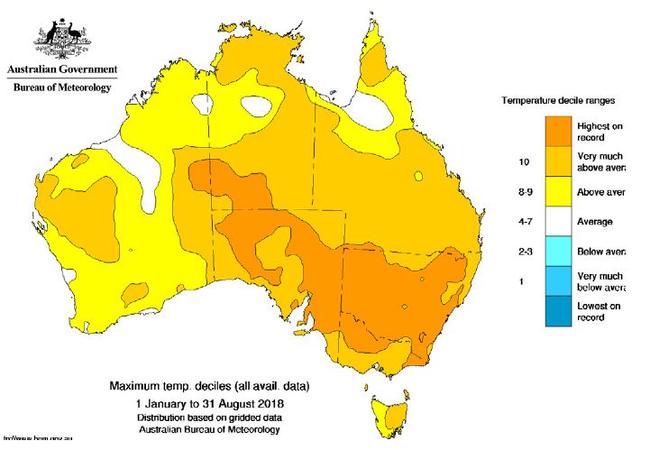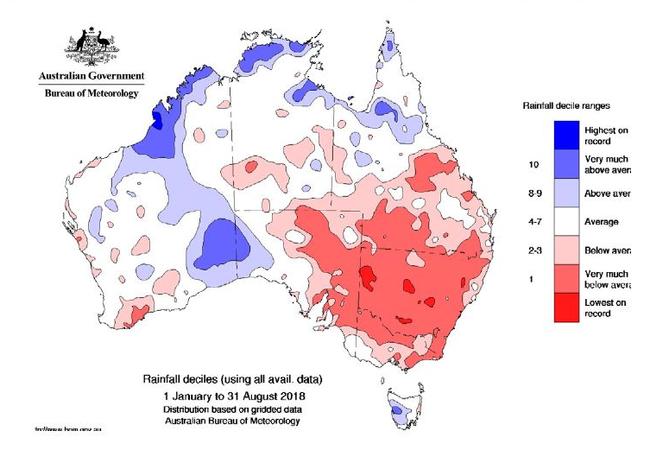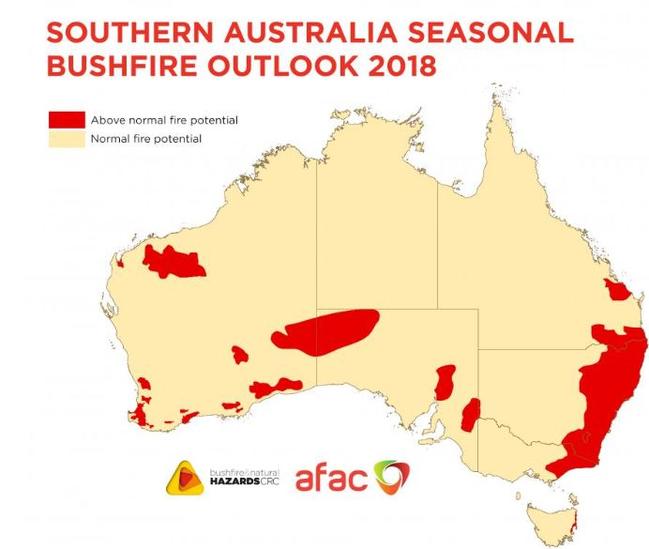Bushfire season 2018/2019: Report warns of long fires after warmer and drier conditions this year
SIGNIFICANT bushfires can be expected across South Australia during a fire danger season that has the potential to start earlier and finish later, a new report warns.
SIGNIFICANT bushfires can be expected across South Australia during a fire danger season that has the potential to start earlier and finish later, a new report warns.
The Bushfire and Natural Hazards Co-operative Research Centre 2018 bushfire seasonal outlook reveals drier and warmer than average conditions are forecast throughout spring and summer.
The Riverland, Murraylands, Flinders Ranges and populated areas of the APY Lands have been identified as the most likely regions to experience above normal fire potential this season.

“It is important to note that no forecast models are indicating any likelihood of increased rainfall across South Australia, which means the fire danger season has the potential to commence early and finish late in parts of the state,” the report, released on Thursday, states.

“Significant bushfires have occurred in similar conditions and areas of normal fire potential can expect to experience dangerous bushfires as per a normal South Australian fire season.”
The report states the recent El Niño watch also suggests that the dry spring conditions are likely to continue throughout summer.

Late winter rain, which helped reduced soil dryness in some parts of the state, will promote vegetation growth and increase fire fuels during the season.
“The current Bureau of Meteorology forecast is for dry conditions to persist through spring, which may also erode any benefits from recent rainfall,” the report states. “Despite average winter rainfall, the fuel growth and forecast dry conditions indicate that the potential for bushfire across the populated areas of the Mount Lofty Ranges remains.”
The report also shows the dry conditions in agricultural areas have resulted in less cropping activity.
South Australia is forecast to record a decrease in areas planted and in yields from sown crops.
This could reduce the risk of fires from agricultural activity in some areas.
